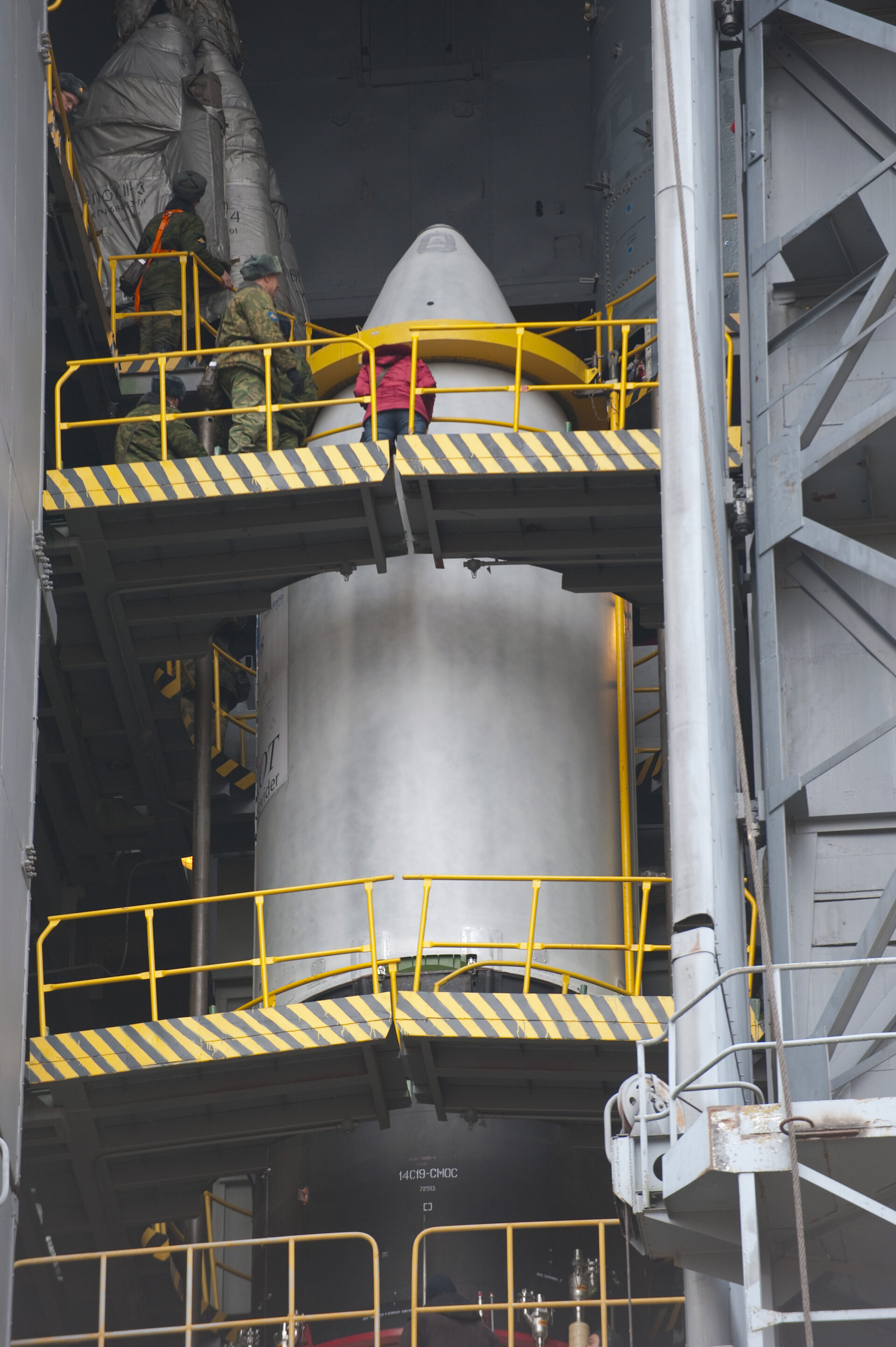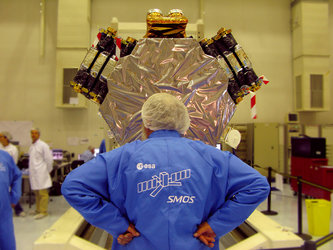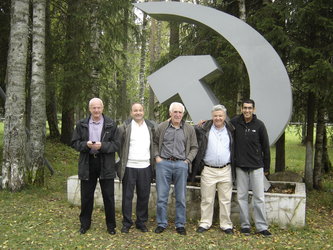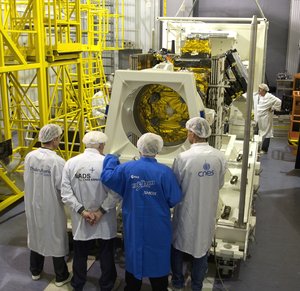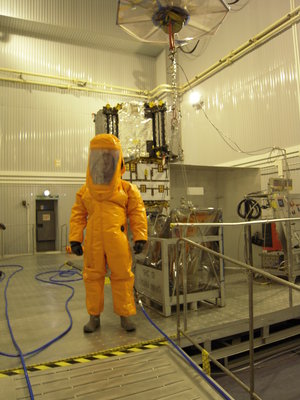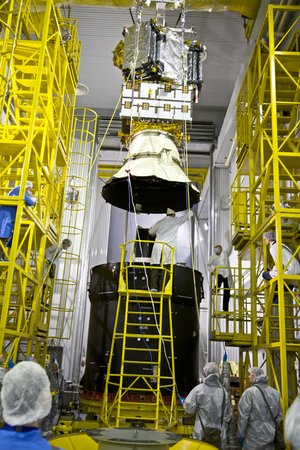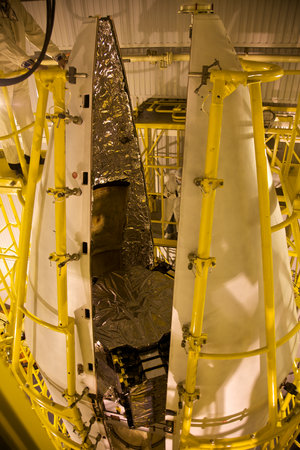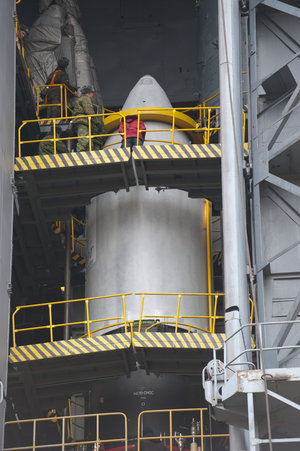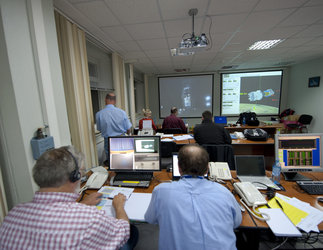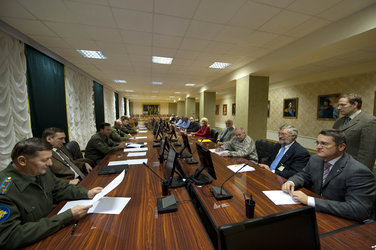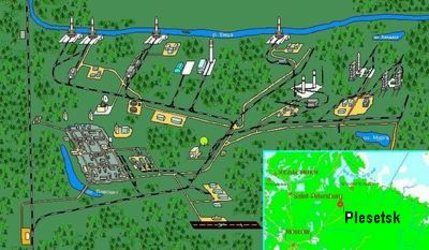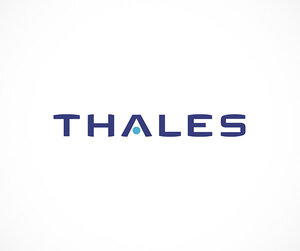Entry 10: SMOS in the launch tower
27 October 2009 – Today, the upper composite, which comprises the SMOS and Proba-2 satellites mated to the Breeze-KM upper stage and encapsulated in the fairing, was installed in the launch tower.
The upper composite was loaded onto a train the day before and spent the night in the integration facilities ready for an early start today. The train left the MIK at 06:00 and arrived at the launch pad at 10:00. Snow was gently falling, dressing the forest with a white mantle and provided cold but really moist air to salute SMOS as it was transferred to the pad.
The upper composite was then hoisted to the top of the tower and then joined the launcher below. The SMOS and Proba-2 team had a chance to witness the train arrival and see the upper stage be lifted up the tower.

Roger Jegou, ESA’s Launch Campaign Manager for SMOS, commented, “This moment is always unique in a launch campaign, it can be compared to the wedding of your child, you know you have done everything possible from birth, you’ve watched it grow and now you enter a new chapter. We have high expectations that SMOS perform well and help understanding more about the Earth system.”
Achim Hahne, ESA’s Project Manager for SMOS, said, “My whole team has been working very hard, hand in hand with industry, to get to this point and I thank everyone, both here in Plesetsk and in western Europe. I have just arrived in Plesetsk, so I am very happy to be here and share in this milestone moment with the launch team and our dear Lead Investigator Yann Kerr.”
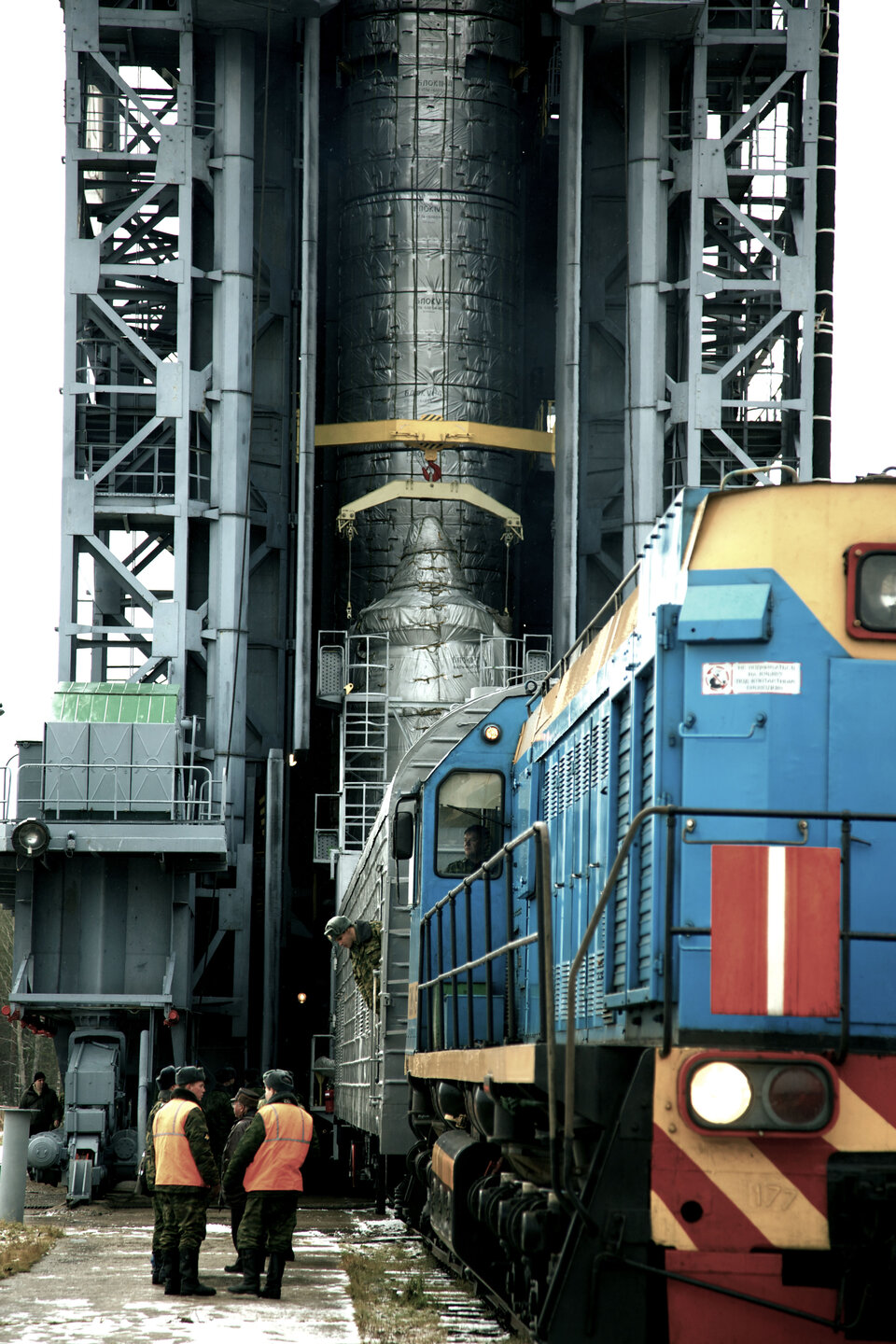
Yann Kerr from CESBIO added, “I wish Jordi Font, who is co-Lead Investigator, could have stayed a bit longer with us to see this. I would like to thank all the SMOS team members for their performances and I am highly confident that SMOS will help learn more about our climate.”
The two satellites are now in the hands of ESA’s Russian partners who will now take over and launch the satellites on 2 November at 02:50 CET (01:50 UT).


